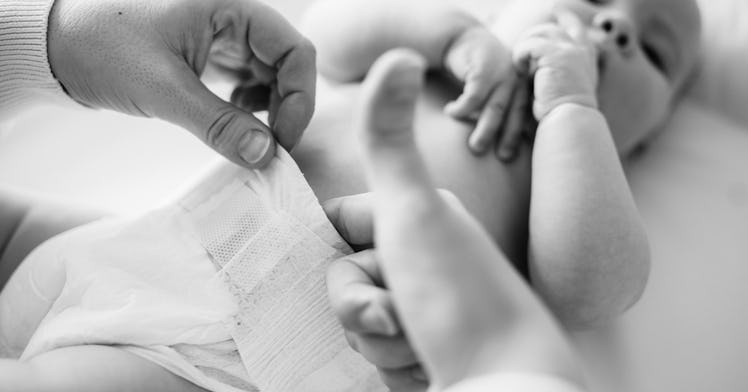Study: Baby Poop Has A S%!* Ton of Microplastics. What Does That Mean?
Babies had vastly more plastic in their poop than adults, but the health impacts of that aren’t obvious.

We live in a world of plastic. We have plastic in our dishes, plastic in our clothing, plastic in our furniture: plastic is basically everywhere and in everything. And now, many of us — including babies — have plastic in our poo.
Unless you swallow a toy dinosaur, you’re probably not going to notice the plastic in your toilet bowl. The plastic in our poop is known as “microplastic,” particles smaller than a few millimeters wide. While mostly too small to spot with our own eyes, microplastics are now scattered all over the world — from human bodies to the bottom of the ocean. And though the effects of microplastics on human health aren’t entirely understood, some researchers are concerned about the impacts these materials might have on our bodies, especially in younger kids.
According to a recent study, microplastics are now showing up in baby poop. Researchers analyzed samples taken from six one-year-olds, and three newborns, for two types of microplastics — polyethylene terephthalate (PET) and polycarbonate (PC). The prevalence of these two substances is hard to understate: PET, a kind of polyester, and PC are used to make everything from clothing to food storage to mobile phone cases, reports the study, published last month in Environmental Science and Technology Letters.
The researchers found that all six infants had both PET and PC microplastics in their poop. They also compared these findings to poop from 10 adults and found that overall, infants often had vastly more PET in their poop than the adults.
While the median PET concentration in adults was 2,600 nanograms of plastic per gram of poop, the median infant had 36,000 nanograms of PET per gram of poop. (A nanogram is one-billionth of a gram.) In addition, two of the three newborns had at least some kind of microplastic in their meconium, the first poop after birth.
Infants might have more exposure than adults to microplastics due to their immediate contact with many plastics, the authors suggest. Babies put everything from sippy cups and bottles to toys and clothing in their mouths, the paper notes.
You could imagine how many adults, while still interacting with plastics, likely put fewer of them in their mouths. But the authors also cite another recent paper which found that infants might also be consuming microplastics via dust at higher rates than adults.
These results could make many parents nervous about microplastics and their kids.
But the big question — why do we care? — is still not settled science, Wired reports. On one level, if you’re finding microplastics in poop, that means the material isn’t staying in our bodies, and this was the prevailing belief for a while, notes The Verge. But as the recent study notes, some very tiny microplastics (about 10% the width of a human hair and smaller) could possibly enter into human cells according to previous research.
Wired also mentions that some microplastics come with worries about the endocrine system, which mobilizes hormones through glands like the thyroid and pancreas. The magazine reports that some components of plastics, like bisphenol A (BPA), can mess with the endocrine system, potentially leading to issues in other parts of the body. And Kurunthachalam Kannan, a pediatrics and environmental medicine expert at NYU School of Medicine and an author on the paper, tells Wired that he thinks materials like these pose a risk to young kids.
It’s important not to jump to any conclusions about the implications of this finding, as microplastics research has a long road forward. But parents of young kids have a few options to try and reduce microplastics exposure, Wired notes, such as mixing formula in glass bottles and regular vacuuming.
Yet if we’re now finding microplastics as far away as Antarctic sea ice and the literal sky, there’s probably only so much we can do when it comes to our homes.